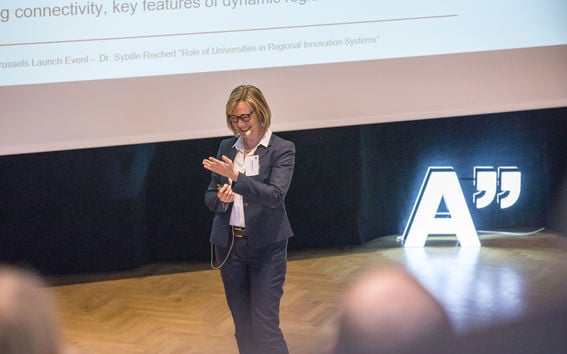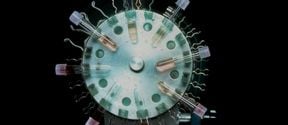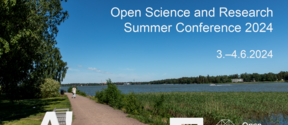A culture of low hierarchies and high trust is a good platform for innovation

Innovations are increasingly emerging from networks of companies, universities and public sector organisations, and they often also include citizens and customers. According to a recent report published by The European University Association (EUA), universities’s role in these networks has become more central than before. The study looked at the characteristics of innovation in nine European universities operating in different countries and operating environments.
Aalto University's student-led entrepreneurial activity is unique
According to the study, the Aalto University innovation ecosystem is characterised by four factors: high trust, low hierarchies, strong student empowerment and a highly cooperative community. Dr. Sybille Reichert, who compiled the report, says she is particularly delighted by the self-organised student activities at Aalto University.
‘Aalto University stood out clearly from the other eight universities because of the strong and visible student-led entrepreneurial activities and student empowerment. Many great events such as Slush were examples of this. The university management has not just encouraged the students but let them take their own initiatives, and this has been wise,’ Dr. Reichert describes.
Characteristic features that are common to Nordic societies are low hierarchy and high trust. Sybille Reichert concludes that these features are clearly visible at Aalto University and provide a strong platform for innovation.
‘Based on our findings, high trust is expressed by providing space for different skills and views, and by giving others positive feedback. Although academic work involves competition and aspiration, at Aalto one dares to admit the limits of one’s own perspective and expertise. Additionally, leaders at Aalto are attentive to not having a top-down form of leadership, and willing to engage people in finding agendas.’
Aalto’s culture of learning is worth promoting
‘We noticed that Aalto has succeeded in creating a great culture of independent and project-based learning and the emergence of new ideas in cooperative teams. This is a real strength and worth promoting,’ Dr. Reichert says.
‘We also found genuine enthusiasm for developing academic research with societal impact and solving the world's major problems. A unique combination of different fields of expertise will allow thinking against the grain, find fresh perspectives and more sustainable solutions.’
Universities orchestrate cooperation for innovation
Various competencies, different perspectives and co-creation are needed to create innovations. In addition to universities, innovation networks are made up of companies, public sector organisations and citizens. According to the EUA report, the role of universities in these multi-actor innovation networks and in the creation of innovations is increasingly central, and universities are seen as the best parties to coordinate or orchestrate innovation cooperation.
According to Dr. Reichert, partnerships are closely linked to institutional strategy at Aalto University.
‘There is a global trend of universities attracting companies and partners into their networks. Aalto University is a forerunner in this, and the involvement of partner organisations in the university's activities is very extensive. The Design Factory and the community space A Grid are good examples of how the university offers facilities for businesses and invites them to interact.’
| The report The Role of Universities in Regional Innovation ecosystems was published on 8 March 2019 in Brussels. The universities involved in the research were Aalto University (Finland), Masaryk University (Czech Republic), Sorbonne University (France), TU/e – Eindhoven University of Technology (the Netherlands), TUM – Technical University of Munich (Germany), University of Manchester (UK), University of Minho (Portugal), University of Warsaw (Poland), UPC – Universitat Politècnica de Catalunya (Spain). |
- Published:
- Updated:
Read more news

A new way to do controlled experiments in medicine: simulate the control
Generative AI could augment randomized controlled trials.
Open Science and Research Summer Conference 2024 will be hosted by Aalto University
Open Science and Research Summer Conference 2024 will be held at Aalto University’s Otaniemi campus and in Zoom 3.–4.6.2024. Please register by May 3.Physicists explain—and eliminate—unknown force dragging against water droplets on superhydrophobic surfaces
Aalto University researchers adapt a novel force measurement technique to uncover the previously unidentified physics at play at the thin air-film gap between water droplets and superhydrophobic surfaces.